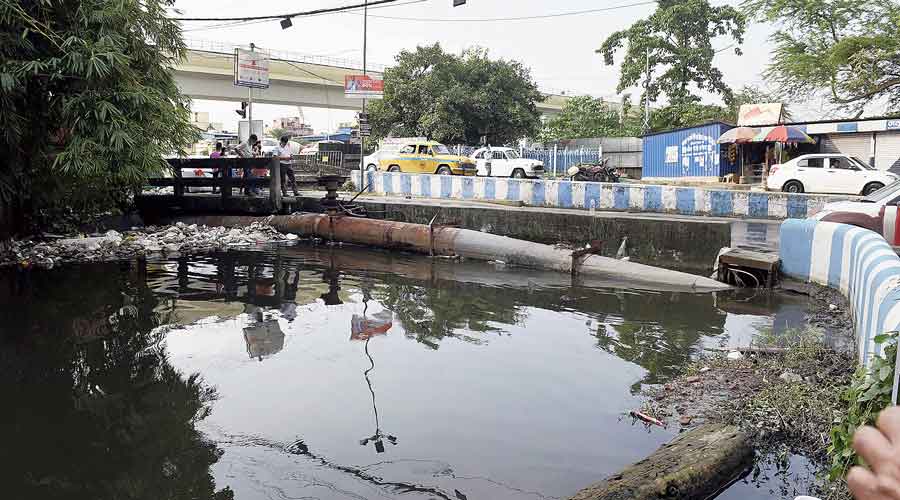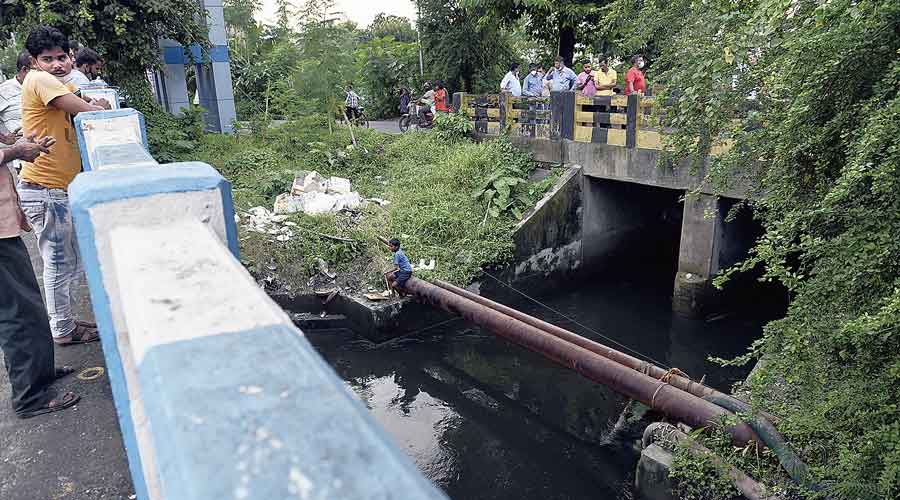The man in charge of drainage in Kolkata has learnt about some of the important factors that can be blamed for the repeated flooding of Mukundapur on the southeastern fringes of Kolkata.
Tarak Singh, who heads the Kolkata Municipal Corporation drainage department, visited the area on Friday along with KMC engineers.
Singh blamed the irrigation department for not dredging the canals that drain out water from the area.
Engineers of the irrigation department, who were present during a joint inspection to detect causes of flooding, said they were working on remedial measures.
But parts of Mukundapur still lack underground drainage. Open drains, which carry water to canals, work slower compared with underground conduits.
The solutions to the problems will not come soon, the engineers said.

Vehicles ply through a waterlogged stretch in front of the Avidipta housing complex in Mukundapur. Bishwarup Dutta
Based on conversations with engineers and the discussion between them at the site on Friday, The Telegraph lists some of the problems and why they are responsible for frequent flooding in the area
Silted canals: The canals that drain water from Mukundapur — Guniagachhi and Tollygunge-Panchannagram (TP) canals — are heavily silted.
Civic engineers said entire Kolkata’s drainage was dependent on criss-crossing canals, which drain rainwater from the city into the Kulti and Bidyadhari rivers, both situated to the east of Kolkata.
“The silting of the canals is the primary problem. Water flows slowly through silted canals. This will naturally cause waterlogging on roads from where water is discharged into these canals,” said Singh.
During Friday’s inspection, it was suggested that the irrigation department find out the volume of water that would be drained into Guniagachhi and TP canals taking into account the highest rainfall in that area in the last several decades.
Engineers said such records were available. This would help them plan how much dredging will be needed.

The Guniagachhi canal in Mukundapur that needs dredging. Bishwarup Dutta
Ineffective pumping
Station: The Old Chowbhaga Drainage Pumping Station — which discharges water from Mukundapur into another canal, which carries water out of Kolkata — is not being able to perform the task adequately, said irrigation department engineers.
The station can simultaneously run eight pumps that can discharge 400 cubic foot per second of water, which is proving to be inadequate. An irrigation department engineer said a proposal to increase the capacity of the station was under discussion.
A drainage pumping station uses high-powered pumps to discharge water coming through drains from various areas into canals.

The Guniagachhi canal in Mukundapur. Bishwarup Dutta
“Waterlogging is inevitable if a drainage pumping station lacks the capacity to efficiently and quickly drain out water,” said a KMC engineer.
Underground drainage: The civic body must develop underground drainage across Mukundapur and ensure that the conduits in the area were capable of carrying rainwater into the canals.
“There are many pockets in Mukundapur that lack underground drainage. An open drain will carry water under the natural flow of gravity, because they are located above canals. This is a slower process of draining out water than by using pumps, which is done in case of underground drainage networks,” said the engineer.
